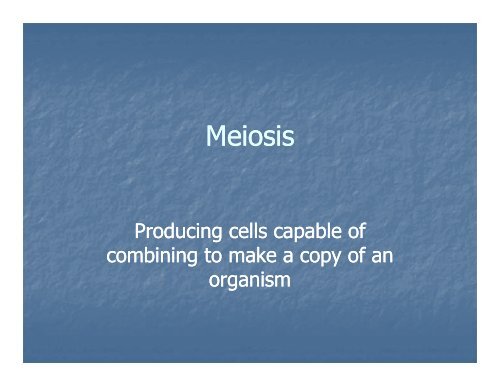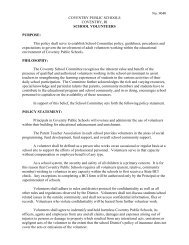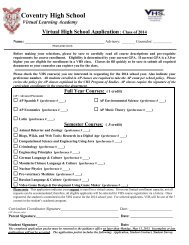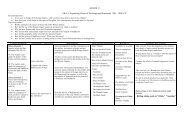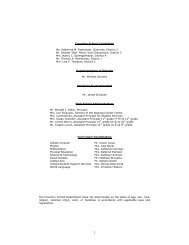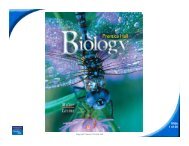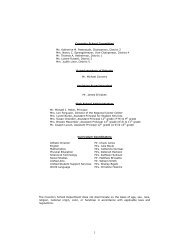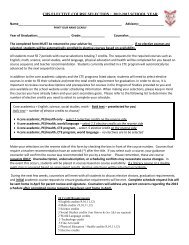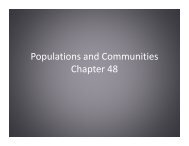Meiosis PPT
Meiosis PPT
Meiosis PPT
- No tags were found...
Create successful ePaper yourself
Turn your PDF publications into a flip-book with our unique Google optimized e-Paper software.
<strong>Meiosis</strong>Producing cells capable ofcombining to make a copy of anorganism
GameteForming Gametes Another name for a reproductive cell In order to end with a complete set ofchromosomes, cells must divide theirgenes into half sets One set in the male reproductive cell - sperm One set in the female reproductive cell - egg
Human reproductive cells Number of chromosomes in a normalhuman cell?46 Each reproductive cell contains 23chromosomes so that when they arecombined the will produce a cell with 46chromosomes
Haploid vs Diploid Haploid cells contain only one set ofchromosomes [half the required amount] Usually represented by the letter n n = 23 haploid human reproductive cell Diploid cells are complete cells. Eachhaving a complete set of chromosomes. 2n = 46 diploid = human organism
Haploid and Diploid cells Other Organismsfor other organismsHaploidDiploid Fruit Fly n = 4 2n = 8 Chicken n = 39 2n = Corn n = 10 2n = Pea n = 7 2n = White-tail tail Deer n = 35 2n =
A special process of cell division <strong>Meiosis</strong> A process where the number of chromosomesin the diploid cell is reduced by half to form ahaploid gamete. Similar to mitosis – meiosis 1; but nointerphase before the next division Therefore the chromatids don’t duplicate
<strong>Meiosis</strong> one Prophase 1Phases of <strong>Meiosis</strong> Chromosomes uncoil and spindle fibers form Metaphase 1 Chromosomes pair and line up in center of cell Paired chromosomes are called tetrad
Anaphase 1 Tetrads are pulled apart; one going towards eachend of the cell Crossing-over over can occur Telophase 1 Nuclear envelope reforms and cell begins to divide Two new cells begin to form But with different combinations of chromosomes End result is two haploid daughter cells
<strong>Meiosis</strong> II No DNA replication at the beginning of thisprocess Each cell contains a mixed set ofchromosomes The cell undergoes another division
Prophase II Nuclear envelope begins to dissolve Spindle fibers begin to form Metaphase II Chromosomes attach to fibers Chromosomes line up in center of cell Anaphase II Chromosome pairs split Spindle fibers begin to contract
Telophase II Two cells begin to divide Nuclear envelope begins to reform Four haploid cells produced Gametes Four haploid cells may form up to fourdaughter cells In male humans, all four develop into gametes In female humans, only one cell becomes agamete; the others are polar body’s


